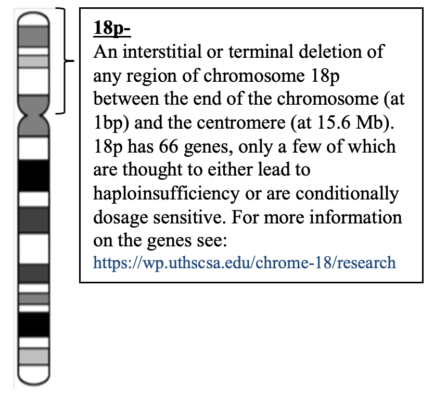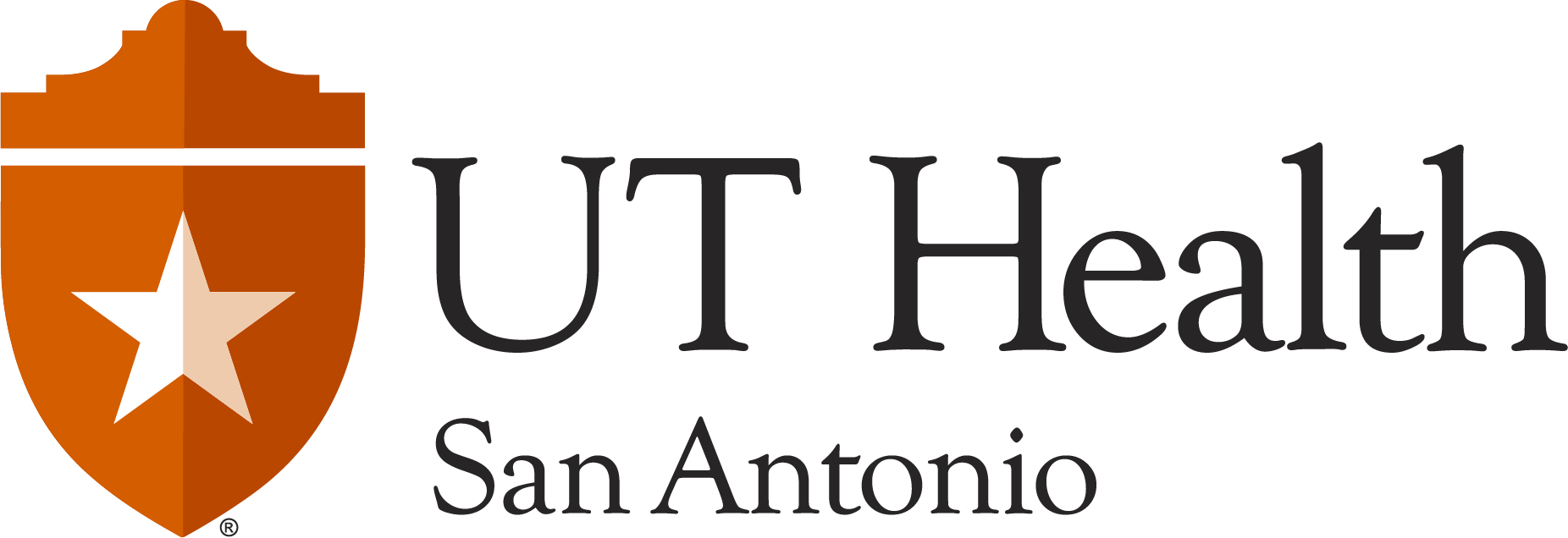18p- Treatment and Surveillance
 ICD-10 = Q99.9 or Q93.89
ICD-10 = Q99.9 or Q93.89
These recommendations are inclusive of the entire population of people with 18p deletions. Even though about half of this group have deletions of the entire short arm of the chromosome and the other half have individually unique deletion of only a portion of the chromosome arm. Consequently, not everyone with 18p- has exactly the same genes that are hemizygous. The specific hemizygous genes for an individual patient will dictate the probability of particular phenotypes. However, the information in this document includes the global 18p- evaluation and management plan.
Potential conditions in a neonate
- Structural
- Hernias (inguinal, umbilical)
- Heart abnormalities
- Cryptorchidism
- Sacral agenesis / myelomeningocele
- FunctionalRespiratory
- Feeding problems
- Hypotonia
- Biochemical
- Jaundice
- Hypoglycemia
Initial evaluations after diagnosis
- Cerebral MRI-abnormalities – >70%
- Ophthalmology exam-
- ptosis-47%
- vision and optic problems – >38%
- Audiology evaluation – hearing deficits-22%
- Thyroid evaluation-
- thyroid problems-17%
- Cardiology exam-cardiac defects-45%
- Orthopedic exam-orthopedic problems 47%
- Renal ultrasound-hydronephrosis or malformations-14%
Referrals to
- Appropriate sub-specialist as indicated by initial evaluations
- Genetics Follow -up if not previous to diagnosis
- Early intervention/developmental services
- The Chromosome 18 Registry & Research Society
- The Chromosome 18 Clinical Research Center
Closely monitor and manage
- Failure to thrive/growth failure
- Weight gain
- Linear growth
- Ear infections
- Immunology/Rheumatology
- Atopic disorders
- Arthritis
- Other autoimmune conditions
- Orthopedics
- Scoliosis or kyphosis
- Sacral agenesis
- Development
- Milestones
- Psychmetric data
- Current Adult Status
- Neurology
- Seizure disorder
- Balance problems
- Muscle weakness
- Hypotonia
Annual Screenings
- Thyroid
- Vision
- Hearing
Current Adult Status
Age and Cause of Death
Updated 2020
There is additional information on each of the areas mentioned above within the downloadable PDF document.
Updated 2020

